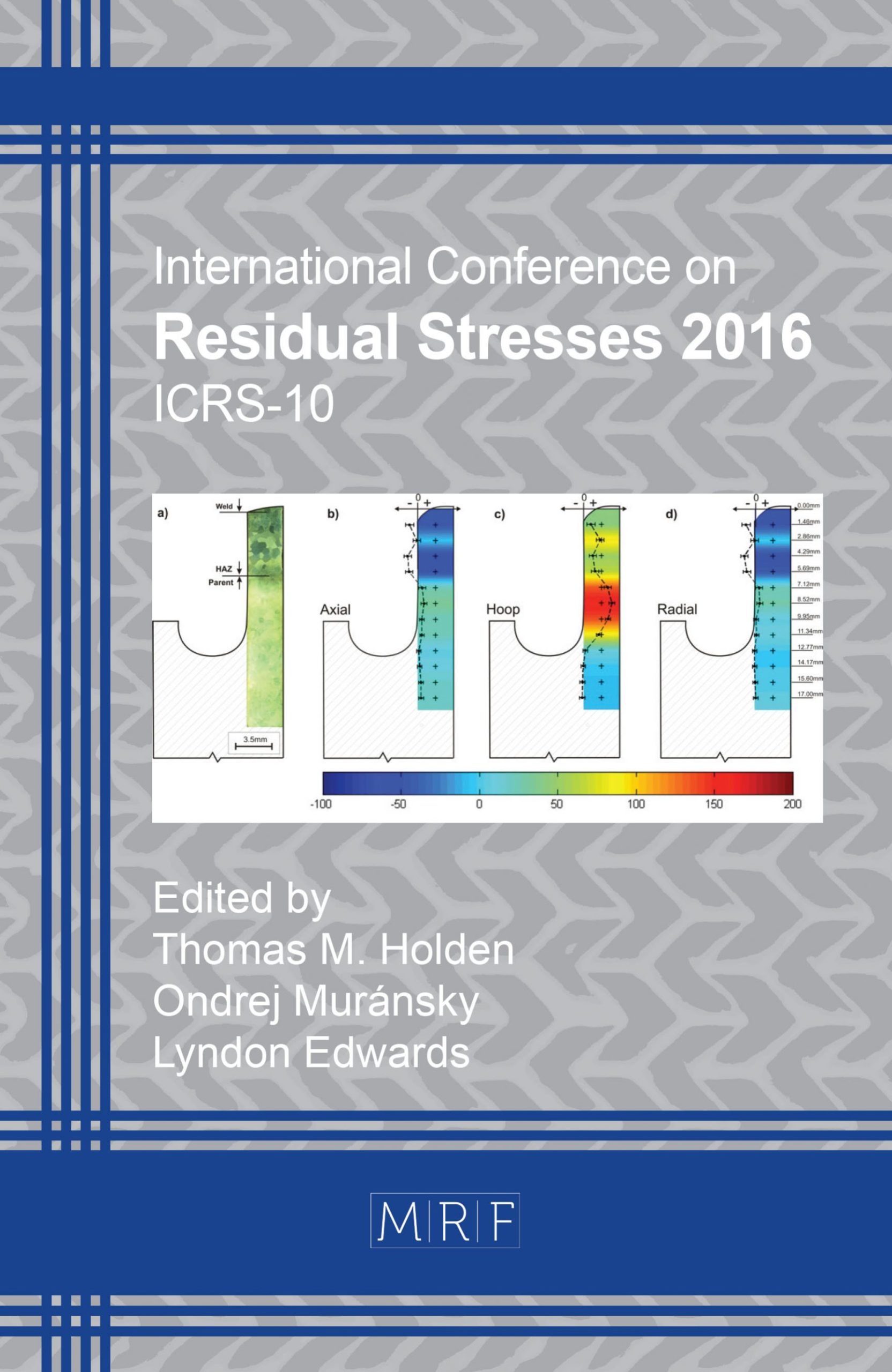X-Ray Diffraction Measurements and Investigation of the Stress Relaxation in Autofrettaged AISI 4140 Steel Thick Walled Cylinders
N. Lyubenova, J. Pineault, H. Brünnet, D. Bähre
download PDFAbstract. Hydraulic autofrettage is a manufacturing process that induces favorable compressive residual stresses and is especially suitable for the treatment of internally pressurized components. If autofrettage is not the final treatment applied, the application of post-machining or other cold working processes can lead to a relaxation and redistribution of the stresses induced by the autofrettage process. In this paper, comprehensive X-ray diffraction residual stress measurements were performed and the influence of the applied autofrettage pressure and post-machining on the resultant residual stress vs. depth profiles was investigated.
Keywords
Residual Stress, Autofrettage, Post-Machining, X-Ray Diffraction, Stress Correction
Published online 12/22/2016, 6 pages
Copyright © 2016 by the author(s)
Published under license by Materials Research Forum LLC., Millersville PA, USA
Citation: N. Lyubenova, J. Pineault, H. Brünnet, D. Bähre, ‘X-Ray Diffraction Measurements and Investigation of the Stress Relaxation in Autofrettaged AISI 4140 Steel Thick Walled Cylinders’, Materials Research Proceedings, Vol. 2, pp 335-340, 2017
DOI: http://dx.doi.org/10.21741/9781945291173-57
The article was published as article 57 of the book Residual Stresses 2016
![]() Content from this work may be used under the terms of the Creative Commons Attribution 3.0 licence. Any further distribution of this work must maintain attribution to the author(s) and the title of the work, journal citation and DOI.
Content from this work may be used under the terms of the Creative Commons Attribution 3.0 licence. Any further distribution of this work must maintain attribution to the author(s) and the title of the work, journal citation and DOI.
References
[1] Davidson, T.E., Barton, C.S., Reiner, A.N., Kendall, D.P., “The Autofrettage Principle as Applied to High Strength Light Weight Gun Tubes”, U.S. Army T. R. WVT-RI-5907, Watervliet Arsenal, Watervliet, USA, 1959.
[2] H. Brünnet, M. Hofmann, N. Lyubenova, D. Bähre, Effect of Different Manufacturing Process Steps on the Final Residual Stress Depth Profile along the Process Chain of Autofrettaged Thick-Walled-Cylinders, Proceedings of the 9th European Conference on Residual Stresses, Advanced Materials Research (Volume 996), 2014, pp. 676-681. http://dx.doi.org/10.4028/www.scientific.net/amr.996.676
[3] Lechmann, M., “Development of a Fatigue Fracture Design Concept for Internal Pressure Loaded Parts with Extensive Compressive Stress Fields”, Dissertation, Stuttgart University, Germany, 2008.
[4] Herz, E., Thumser, R., Bergmann, J.W., Vormwald, M., “Endurance Limit of Autofrettaged Diesel-engine Injection Tubes with Defects”, Engineering Fracture Mechanics 73, 2006, p. 3. http://dx.doi.org/10.1016/j.engfracmech.2005.06.006
[5] H. Brünnet, D. Bähre, T. Rickert, D. Dapprich, Modeling and Measurement of Residual Stresses Along the Process Chain of Autofrettaged Components by Using FEA and Hole-Drilling Method with ESPI, Proceedings of the 9th International Conference on Residual Stresses, Materials Science Forum 768-769, 2014, pp. 79-86, http://dx.doi.org/10.4028/www.scientific.net/MSF.768-769.79
[6] Happe, U. “Entwicklungstendenzen im Hochdrudcbau”, Chemie Ingenieur Technik, 24. Jahrg. 1952/Nr. 7, 1952, pp. 411-413.
[7] Brünnet, H.; Yi, I.; Bähre, D., “Modeling of Residual Stresses and Shape Deviations along the Process Chain of Autofrettaged Components”, Journal of Materials Science and Engineering A, Volume 1/7A, 2011, pp. 915-936.
[8] Totten, G., Howes, M., Inoue, T., “Handbook of Residual Stress and Deformation of Steel, Chapter Measurement and Prediction of Residual Stress and Distortion”, ASM International, 2002, pp. 112.
[9] Moore, M.G., Evans, W.P., “Mathematical Correction for Stress in Removed Layers in X-Ray Diffraction Residual Stress Analysis”, SAE Residual Stress Committee, 1956.
[10] Ahmad, A., et. al., “Residual Stress Measurement by X-ray Diffraction”, SAE HS-784, SAE International, Warrendale, PA, 2003, p.85.
































